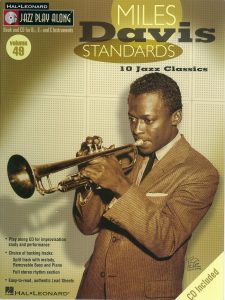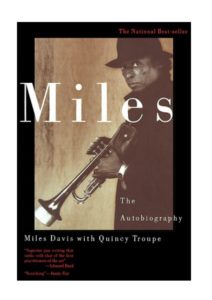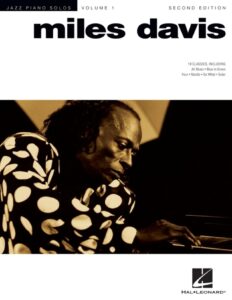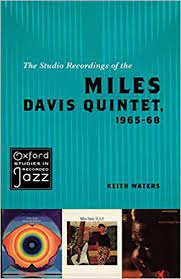Come join us now, and enjoy playing your beloved music and browse through great scores of every level and styles!
Can’t find the songbook you’re looking for? Please, email us at: sheetmusiclibrarypdf@gmail.com We’d like to help you!
Table of Contents
Miles Davis (sheet music in the #smlpdf)

Best Sheet Music download from our Library.
Miles Davis All Blues (Easy Piano Solo)
Miles Davis (Songbook) Jazz Piano Solo Series Volume 1 (Miles Davis)
Miles Davis – (1959) Kind Of Blue (Hl) (Full Band Score)
Miles Davis – Birth Of The Cool
Miles Davis – Originals Solos Vol. 2, including:
- 1. All Blues
- 2. So What
- 3. Miles
- 4. Agitation
- 5. Miles Runs The Voodoo Down
- 6. Petits Machins
- 7. Spanish Key
- 8. Bitches Brew
- 9. Country Son
- 10. Filles De Kilimanjaro
- 11. No Blues
- 12. Eighty One
- 13. Four
- 14. Seven Steps To Heaven
Miles Davis – Transcribed Trumpet Solos, including:
| A1 | Dig | |
| A2 | Serpent’s Tooth | |
| A3 | Tune Up | |
| A4 | Miles Ahead | |
| A5 | Solar | |
| B1 | Miles’ Theme | |
| B2 | Vierd Blues | |
| B3 | Oleo | |
| B4 | Airegin | |
| B5 | Tune Up |
Miles Davis (Songbook) Jazz Piano Solo Series Volume 1 (Miles Davis), including:
All Blues
Blue In Green
Boplicity
Dig
Circle
Eighty One
Four
Flamenco Sketches
Freddie Freeloader
Half Nelson
Miles
Milestones
Nardis
Seven Steps To Heaven
So What
Solar
Somethin’ Else
Tune Up
The Theme
Miles Davis – When Lights Are Low (Benny Carter) As played by
Miles Davis Autobiography (Book)
Miles Davis Boplicity Full score
Miles Davis Jazz Play-Along Volume 02 with audio MP3, including:
All Blues * Blue in Green * Four * Half Nelson * Milestones * Nardis * Seven Steps to Heaven * So What * Solar * Tune Up.

Miles Davis Kind Of Blue 1959 Songbook, including:
So What • Freddie Freeloader • Blue in Green • All Blues • and Flamenco Sketches
Miles Davis La biografia definitiva-Ian Carr

Miles Davis Omnibook For C instruments Transcribed exactly from his recorded solos, including:
- Airegin
- All Blues
- All Of You
- Au Privave
- Bags’ Groove
- Billie’s Bounce (Bill’s Bounce)
- Blue Haze
- Budo
- But Not For Me
- Bye Bye Blackbird
- Diane
- Dig
- Doxy
- E.S.P.
- Footprints
- Four
- Freddie Freeloader
- A Gal In Calico
- Green Haze
- I Waited For You
- I’ll Remember April
- If I Were A Bell
- It Could Happen To You
- It’s Only A Paper Moon
- Jeru
- K.C. Blues
- Love Me Or Leave Me
- Miles
- Miles Ahead
- My Funny Valentine
- Oleo
- On Green Dolphin Street
- The Serpent’s Tooth
- Seven Steps To Heaven
- Sippin’ At Bells
- So What
- Solar
- Some Day My Prince Will Come
- Stablemates
- Stella By Starlight
- Stuff
- Summertime
- The Surrey With The Fringe On Top
- The Theme
- Trane’s Blues
- Tune Up
- Walkin’
- Well You Needn’t (It’s Over Now)
- Woodyn’ You
- Yesterdays
Miles Davis Real Book C Edition sheet music pdf, including:
4 Agitation 41 Miles
5 Aida 42 Miles Ahead
6 All Blues 44 Milestones
7 Back Seat Betty 46 Mood
8 Bitches Brew 47 Nardis
9 Blue Haze 48 Petits Machins
10 Blue in Green 49 Pfrancing (No Blues)
11 Blues No. 2 50 The Serpent’s Tooth
12 Boplicity (Be Bop Lives) 51 Seven Steps to Heaven
14 Brown Hornet 54 Shhh/Peaceful
13 Budo 55 Sid’s Ahead
16 Circle 56 Side Car
17 Circle in the Round 57 Sippin’ at Bells
18 Deception 58 So What
22 Dig 60 Solar
23 Down 61 Somethin’ Else
24 Drad Dog 62 Song No. 2
26 Eighty One 64 Spanish Key
28 Filles de Kilimanjaro 66 Stuff
27 Flamenco Sketches 68 Swing Spring
30 Four 65 Tea’s Bag
32 Fran Dance 70 Theme
31 Freddie Freeloader 71 Thisness
34 Green Haze 72 Tout de Suite
36 Half Nelson 75 Tune Up
35 Ife 76 Vierd Blues
38 It’s About That Time 77 Water on the Pond
39 Lazy Susan 80 What It Is
40 Little Willie Leaps
Miles Davis Solos 1, including:
Introduction
Description of Solos
DIG
SERPENT’S TOOTH
TUNE UP (May 19, 1953)
MILES AHEAD
SOLAR
MILES’ THEME
VIERD BLUES
OLEO
AIREGIN
TUNE UP (October 26, 1956)
Miles Davis Tempus Fugit by Bud Powell Jazz Standard
Miles Davis The Complete Guide (Book)
Miles Davis · Eine Biographie Sandner Wolfgang Sandner Wolfgang Book (Deutsch)
Miles Davis, autobiografía
Miles Davis, The Studio Recordings of the Miles Davos Quintet, 1965-1968 by Keith Waters (Book)

Please, subscribe to our Library.
If you are already a subscriber, please, check our NEW SCORES’ page every month for new sheet music. THANK YOU!
Miles Davis – Kind Of Blue (Full Album)
“Kind of Blue” is a studio album by American jazz musician Miles Davis, released on August 17, 1959, by Columbia Records. Recording sessions for the album took place at Columbia’s 30th Street Studio in New York City on March 2 and April 22, 1959. The sessions featured Davis’s ensemble sextet, with pianist Bill Evans, drummer Jimmy Cobb, bassist Paul Chambers, and saxophonists John Coltrane and Julian “Cannonball” Adderley. After the entry of Evans into his sextet, Davis followed up on the modal experimentation of Milestones (1958) by basing Kind of Blue entirely on modality, in contrast to his earlier work with the hard bop style of jazz.
Though precise figures have been disputed, Kind of Blue has been described by many music writers not only as Davis’s best-selling album, but as the best-selling jazz record of all time. On October 7, 2008, it was certified quadruple platinum in sales by the Recording Industry Association of America (RIAA). It has been regarded by many critics as the greatest jazz album of all time and Davis’s masterpiece. The album’s influence on music, including jazz, rock, and classical music, has led music writers to acknowledge it as one of the most influential albums ever made. In 2002, it was one of fifty recordings chosen that year by the Library of Congress to be added to the National Recording Registry. In 2003, the album was ranked number 12 on Rolling Stone magazine’s list of the 500 greatest albums of all time.
Tracklist:
00:00 – So What 12:16 – Freddie Freeloader 22:03 – Blue in Green 27:42 – All Blues 39:15 – Flamenco Sketches

Please, subscribe to our Library.
If you are already a subscriber, please, check our NEW SCORES’ page every month for new sheet music. THANK YOU!

Best Sheet Music download from our Library.
Who was Miles Davis?
| Miles Dewey Davis III was born in Alton, Illinois on May 25, 1926 in the from a family with a prosperous economic situation (his father was dentist with a large clientele) and a music fan (her father He tried to be a musician, which his grandfather did not allow, his mother, an admirer of Duke Ellington and Art Tatum, was a violinist and his sister played the piano). To the Two years later his family moved to East St.Louis. At the age of thirteen he receives in his his birthday a trumpet. His education will begin with trumpeter Elwood Buchanan. During his time at the institute he participated in his big-band, as well as in different jam-sessions. At that time he met the trumpeter Clark Terry and the saxophonists Sonny Stitt and Illinois Jacquet who suggest he join them to work on different projects, but the pressure exerted by his mother forces him to finish his studies at the institute. Between the years 1941-1943 He joins a local orchestra, Eddie Randall’s “Blue Devils”. time he perfects his style with Clark Terry. In 1944 he is one of the “Six Brown Cats” by Adam Lambert and participates in a tour with the group. He returned to East St. Louis where he was to play in Billy Eckstine’s orchestra, which included Dizzy Gillespie and Charlie Parker, for a few concerts in the region. From that moment on he played with Bird in New York will become an obsession. In 1945 and with his father’s permission, he left St. Louis and his wife Irene, with who just got married, to attend the Juilliard School of Music and settles in New York not too far from 52nd Street. On May 6 of that year he made his recording debut with the clarinetist and tenor saxophone sextet Herbie Field in a formation that also included Arnette Cobb, Lionel Hampton, Al Casey, Slam Stewart and Fred Radcliff with 4 songs for Savoy. In that period he plays with Coleman Hawkins, Benny Carter, Eddie Davis, he meets again with Bird, who introduces him to Thelonious Monk, who advises him to study piano. He November 26, 1945 he finally records with Charlie Parker, with whom he will work regularly between 1946-1948. He then performed in front of different groups, including a nonet with which between 1949 and 1950 he recorded the seminal “Birth of the Cool” (edited a few years later). He traveled to Paris in 1949 to perform in a quintet. with Tadd Dameron and Kenny Clarke at the International Jazz Festival. After his Returning to New York he continues performing with different small groups and recording with the best musicians of that time (Sonny Rollins, Sarah Vaughan, Jackie McLean, Horace Silver, Charles Mingus, Thelonious Monk, Milt Jackson among others) until he forms a quintet with John Coltrane, Red Garland, Paul Chambers and Philly Joe Jones (1955-1956). In 1957 he recorded in Paris with Barney Wilen, René Urtreger, Pierre Michelot and Kenny Clarke the music of the film “Ascenseur pour l’echafaud” (Elevator for the scaffold). This year He begins the collaboration with Gil Evans that will be reflected in albums such as “Miles Ahead” or “Sketches of Spain”. In 1958 he will give life to his sextet that includes two saxophones –Cannonball Adderley and John Coltrane-, the pianist Red Garland – who will be successively replaced by Bill Evans and finally by Wynton Kelly-, Paul Chambers and drummer Philly Joe Jones – later replaced by Jimmy Cobb -, with whom he records among others “Milestones” and “Kind Of Blue.” Until 1963 this rhythm section will remain stable –Kelly, Chambers and Cobb- through his training various saxophonists –Sonny Stitt and Hank Mobley -, which is when he calls pianist Herbie to join his group. Hancock, double bassist Ron Carter, drummer Tony Williams and to saxophonist George Coleman who is soon replaced by Wayne Shorter (after a brief stint in Sam Rivers’ training) with those who recorded another handful of masterpieces –”ESP”, the recordings of “Plugged Nickel”, “Miles Smile” and “Nefertiti” -. It is at the end of the 60s when A new change occurs and they begin their experimentations with jazz and rock, which he will begin to develop with masterpieces like “In a Silent Way” and “Bitches Brew” and will continue with “A tribute to Jack Johnson”, “Live-Evil” or “Agartha.” At the same time, through his formations, sensational young musicians like Dave Holland, Keith Jarrett, Chick Corea, Jack DeJohnette, Joe Zawinul, Dave Liebman, Gary Bartz, Bennie Maupin, Sonny Fortune and John McLaughlin. It is at that time when there is rejection by a part of the fans and critics, who feel betrayed by this change of the trumpeter, while who, on the contrary, is one of the jazz musicians who enjoys the greatest popularity. Despite all this and due to a series of various problems in 1975, begins a silence of Miles Davis that will last until the beginning of the 80s when he returns surrounded by young musicians like Bob Berg, Bill Evans, Kenny Garrett, Mike Stern, John Scofield, Adam Holzman, Robert Irving, Marcus Miller, Marylin Mazur, Mino Cinelu and Al Foster among others. At that time he will continue working with rhythms that bring jazz and pop closer again, leaving works such as “Tutu” and “Aura”, working with pop musicians like Cindy Lauper – “Time After Time-, Sting and Prince. He finally died in 1991 in Santa Monica, California, USA, at 65 years old. |
Browse in the Library:
Or browse in the categories menus & download the Library Catalog PDF:
